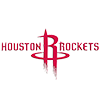As I sit down to write this edition of the Nerd Alert, a mysterious ball of fire -- known colloquially as the "sun," I'm led to believe -- has ascended into the sky of my Upper Midwestern town. Apparently, this "sun" provides both light and heat to earthlings. I have some vague recollection of it -- maybe from last September or October or so -- but wasn't sure if it was merely the stuff of dreams.
In any case, this "sun" appears to be a harbinger of the NBA season's end. There are only three and a half weeks left in regular-season play, and that means we here at Nerd Central will shift our perspective a little -- away from forward-looking pieces and more towards backward-looking ones. Checking our work, as it were.
It's not news to say that so-called "experts" are ubiquitous in the sporting world, making predictions, giving readers "stone-cold locks," etc. Curiously, for all that predict-a-cating, there a very few instances in which these same "experts" look back on the validity of their predictions.
In point of fact, predictions proper aren't the province of the nerd. A prediction is a statement of assuredness, even if (especially if?) supported by little in the way of "evidence." A prediction is "The Bulls will win the NBA Championship." That's fine to say, but not particularly representative of how the world or sports work.
Nerds, on the other hand, tend to deal in probabilities. These are statements supported by data
As I sit down to write this edition of the Nerd Alert, a mysterious ball of fire -- known colloquially as the "sun," I'm led to believe -- has ascended into the sky of my Upper Midwestern town. Apparently, this "sun" provides both light and heat to earthlings. I have some vague recollection of it -- maybe from last September or October or so -- but wasn't sure if it was merely the stuff of dreams.
In any case, this "sun" appears to be a harbinger of the NBA season's end. There are only three and a half weeks left in regular-season play, and that means we here at Nerd Central will shift our perspective a little -- away from forward-looking pieces and more towards backward-looking ones. Checking our work, as it were.
It's not news to say that so-called "experts" are ubiquitous in the sporting world, making predictions, giving readers "stone-cold locks," etc. Curiously, for all that predict-a-cating, there a very few instances in which these same "experts" look back on the validity of their predictions.
In point of fact, predictions proper aren't the province of the nerd. A prediction is a statement of assuredness, even if (especially if?) supported by little in the way of "evidence." A prediction is "The Bulls will win the NBA Championship." That's fine to say, but not particularly representative of how the world or sports work.
Nerds, on the other hand, tend to deal in probabilities. These are statements supported by data and delivered in measured tones -- preferably by someone wearing glasses. A nerd says, "The Chicago Bulls have a 23.1% chance of winning the Championship." Not as fun, admittedly, but way more responsible.
One of my first acts as caretaker of this internet space was to provide a three-part series (boom to the boom to the boom) of articles on shooting -- and specifically shooting at the rim. At-Rim shooting is particularly important because, as you might imagine, players convert at considerably higher rates when all that's required of them is to place the ball in the hole. Yes, sometimes there's a huge Dwight Howard-shaped person there attempting to deny said conversion, but the fact still remains: closer is generally better.
If you're from Missouri and need to be shown the facts of this matter, I present to you the current league averages for field-goal percentage by shot location (range in feet):
Range FG%
At Rim 64.0
3-9 39.1
10-15 39.0
16-23 39.5
Three 36.1
As you might suspect, the rate of conversion at the rim is a little lower for point guards (59.7%) and higher for centers (65.5%), but in no case does the field-goal percentage for any other location on the floor approach the at-rim percentage.
With this knowledge in hand, I endeavored last December to isolate players who were shooting either below or above their established rates at the rim. For players shooting worse than usual, it figured that they would regress up to their career norms, thei overall field-goal percentages moving upwards, as well; for players shooting above established levels at the rim, their numbers would be expected to drop, and the overall field-goal percentages with them.
Here were the candidates for improvement, with their field-goal percentages though December 12th and then from December 13th to the present (GP = games played).
Player:Corey Maggette, MIL
10/26 - 12/12 (GP / FG%): 20 / 40.5%
12/13 - 03/19 (GP / FG%): 38 / 47.3%
Player:Chris Kaman, LAC
10/26 - 12/12 (GP / FG%): 10 / 38.3%
12/13 - 03/19 (GP / FG%): 15 / 50.0%
Player:LaMarcus Aldridge, POR
10/26 - 12/12 (GP / FG%): 24 / 44.1%
12/13 - 03/19 (GP / FG%): 44 / 52.5%
And now here were the candidates for decline:
Player:Landry Fields, NY
10/26 - 12/12 (GP / FG%): 25 / 52.0%
12/13 - 03/19 (GP / FG%): 53 / 50.8%
Player:D.J. Augustin, CHA
10/26 - 12/12 (GP / FG%): 23 / 42.4%
12/13 - 03/19 (GP / FG%): 46 / 42.4%
Player:Jrue Holiday, PHI
10/26 - 12/12 (GP / FG%): 23 / 42.4%
12/13 - 03/19 (GP / FG%): 46 / 45.9%
And now here are some super-incisive notes:
• It should first be noted that, given the paucity of data points here, we should temper any rush to make conclusions. These are illustrative examples more than they are proof of a definite trend.
• The three players we expected to improve did improve -- quite considerably actually. Shooting 45.0% at the rim on December 12th, Maggette is not shooting 60.4% from there. Kaman's rate has increased from 45.5% to 58.3%. Aldridge's, from 55.3% to 66.9%. In all these cases, each player regressed up to his established level, and brought his overall shooting percentage with it.
• The latter three players are a bit more mysterious. As you can, Fields has declined slightly; Augustin, remained the same; Holiday, increased even. What gives? Well, on the one hand, it's entirely possible that these players established entirely new levels of production. There's something else that these players have in common, though -- and that's that none of them have much of a track record in the NBA. Augustin's a third-year player in his first season as a starter; Holiday's a second-year player; Fields, a rookie. Though I regressed each player to league average for every year he hadn't played through three, it's possible that such a manuever is unadvisable when talking about young players being given their first respective shot at playing time and the added usage that comes with it.
Shot-location Data courtesy of Hoop Data.






































